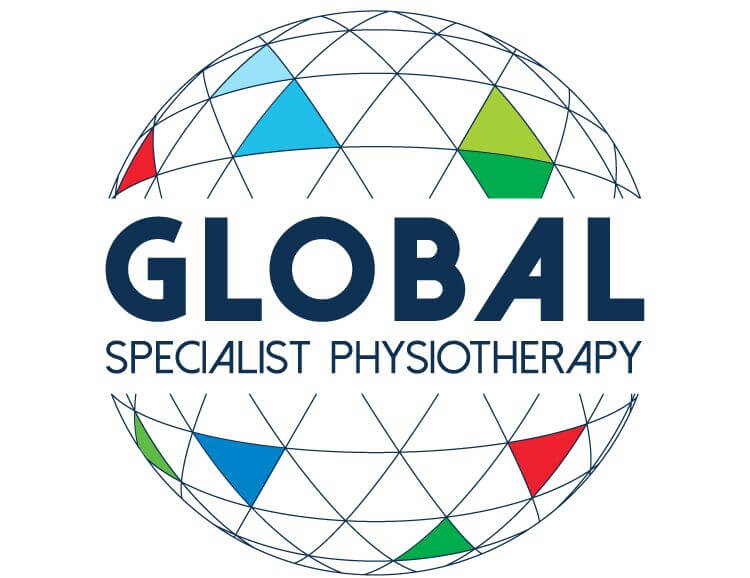Women & Men’s Health
Diastasis Recti
Diastasis recti (DR), refers to the thinning and stretching of the connective tissue that runs down the middle of the most superficial abdominal muscle – the rectus abdominis, or the 6-pack muscle. This thinning and stretching occurs in nearly 100% of women during their third trimester of pregnancy to accommodate the growing foetus.
Following birth what happens to the DR varies from women to women. For some, it will close in time on it’s own, for some they will need intervention to aid in the close, for example specific exercise prescription, bracing or even surgery in extreme cases. And for some, the gap will never close but does not cause an issue. They may be able to learn to appropriately control their core without a full closure.
There are a few misconceptions when it comes to exercise and DR. The first is that exercising during pregnancy can cause DR, this is not the case. As mentioned before, nearly all women will experience some form of DR during the later stages of their pregnancy. However, performing exercise with incorrect technique and/or breathing can exacerbate DR and cause further issues in other areas of the core (including pelvic floor). The second misconception is that once you are diagnosed as having DR there will then be exercises that are off-limits during the early postpartum period. This is again not the case, there are no exercises that are off limits to all those with diastasis recti. Any off-limits exercises should be determined on a case-by-case basis for an individual’s situation.
Core exercises, including breathing, pelvic floor and transverse abdominis activation can be beneficial when performed correctly. These exercises should be prescribed by an appropriate health professional and can be completed both during pregnancy as well as postpartum. Bracing using Tubigrip or compression garments such as SRC short/leggings during the later stages of pregnancy as well as the early postpartum period are extremely beneficial to decreasing the risk of issues arising from your DR.
Following birth what happens to the DR varies from women to women. For some, it will close in time on it’s own, for some they will need intervention to aid in the close, for example specific exercise prescription, bracing or even surgery in extreme cases. And for some, the gap will never close but does not cause an issue. They may be able to learn to appropriately control their core without a full closure.
There are a few misconceptions when it comes to exercise and DR. The first is that exercising during pregnancy can cause DR, this is not the case. As mentioned before, nearly all women will experience some form of DR during the later stages of their pregnancy. However, performing exercise with incorrect technique and/or breathing can exacerbate DR and cause further issues in other areas of the core (including pelvic floor). The second misconception is that once you are diagnosed as having DR there will then be exercises that are off-limits during the early postpartum period. This is again not the case, there are no exercises that are off limits to all those with diastasis recti. Any off-limits exercises should be determined on a case-by-case basis for an individual’s situation.
Core exercises, including breathing, pelvic floor and transverse abdominis activation can be beneficial when performed correctly. These exercises should be prescribed by an appropriate health professional and can be completed both during pregnancy as well as postpartum. Bracing using Tubigrip or compression garments such as SRC short/leggings during the later stages of pregnancy as well as the early postpartum period are extremely beneficial to decreasing the risk of issues arising from your DR.
Exercise during pregnancy
Exercise during pregnancy is a big topic! The usual list of benefits that come from staying active increases when it comes to pregnancy. Some of the more unusual or unknown benefits include lower risk of complications from gestational diabetes, lower pain levels/lower likelihood of developing low back/pelvic girdle pain, faster recovery from birth, more mature brain function in baby’s early life, potential greater motor function and coordination in baby, heart health for both mum and baby (benefits that continue after birth for baby as well!), and a decreased risk of postpartum depressive symptoms.
What kind of exercise or physical activity you should do during pregnancy is very individual. With the general rule being, you can continue with the exercise/physical activity you were doing prior to pregnancy and adjusting, modifying, or ceasing anything that causes pain or discomfort as you move through each trimester. Avoiding a dramatic increase in the intensity of physical activity you are completing is generally advised also, pregnancy is not the time to commence a new sport or try to achieve personal records.
It is advisable to work with an exercise physiologist or women’s health physio during your pregnancy who can guide you through any modifications that you may need to make and help educate you on any red flags to watch out for. With appropriate guidance women should be able to safely maintain some level of physical activity throughout their pregnancy.
What kind of exercise or physical activity you should do during pregnancy is very individual. With the general rule being, you can continue with the exercise/physical activity you were doing prior to pregnancy and adjusting, modifying, or ceasing anything that causes pain or discomfort as you move through each trimester. Avoiding a dramatic increase in the intensity of physical activity you are completing is generally advised also, pregnancy is not the time to commence a new sport or try to achieve personal records.
It is advisable to work with an exercise physiologist or women’s health physio during your pregnancy who can guide you through any modifications that you may need to make and help educate you on any red flags to watch out for. With appropriate guidance women should be able to safely maintain some level of physical activity throughout their pregnancy.
Incontinence in men
It has been reported that up to 35% of men experience incontinence during their lifetime, and this number may be higher with historically a lower reporting rate in men than in women. There are multiple causes of incontinence in men, commonly it is associated with prostate surgery or aging. Incontinence is not a normal part of aging; however age-related conditions can contribute such as a decline in bladder and pelvic floor function. Other factors that may contribute can include medications, caffeine, medical conditions, alcohol, and diet.
There are different types of incontinence. Stress incontinence is when activities such as sneezing, coughing, laughing, lifting and exercise lead to leaking. Urgency incontinence is when a sudden urge to urinate occurs and you may be unable to get to the bathroom in time. There is also leakage without warning, where you may experience leakage without urgency, when standing up from a chair for example. Finally post-void dribbling, which is where urine continues to dribble or drip following a trip to the bathroom.
Treatment for incontinence includes medication, surgery, exercise, and lifestyle modification. Appropriate individualised exercise prescription has been shown to significantly decrease the likelihood of urinary incontinence in men, especially when done pre- and post-surgery. As decline in pelvic floor and core function is a contributor, exercise that focus on strengthening and ensuring appropriate activation during day to day activities should be a focus. Seeing a pelvic floor physiotherapist (sometimes referred to as a women’s health physio- although they do see men and women) is a great start for those that experience incontinence. No amount of leaking, no matter how small is normal, and conservative treatment is available to help manage and reduce symptoms.
There are different types of incontinence. Stress incontinence is when activities such as sneezing, coughing, laughing, lifting and exercise lead to leaking. Urgency incontinence is when a sudden urge to urinate occurs and you may be unable to get to the bathroom in time. There is also leakage without warning, where you may experience leakage without urgency, when standing up from a chair for example. Finally post-void dribbling, which is where urine continues to dribble or drip following a trip to the bathroom.
Treatment for incontinence includes medication, surgery, exercise, and lifestyle modification. Appropriate individualised exercise prescription has been shown to significantly decrease the likelihood of urinary incontinence in men, especially when done pre- and post-surgery. As decline in pelvic floor and core function is a contributor, exercise that focus on strengthening and ensuring appropriate activation during day to day activities should be a focus. Seeing a pelvic floor physiotherapist (sometimes referred to as a women’s health physio- although they do see men and women) is a great start for those that experience incontinence. No amount of leaking, no matter how small is normal, and conservative treatment is available to help manage and reduce symptoms.
Incontinence in women
Nearly 50% of all adult women will experience some form of incontinence (the involuntary loss of urine or faecal matter) during their lifetime, and the majority won’t seek out care. Day to day activities like exercise, sneezing, laughing, coughing, and dancing can all become stressful situations when you experience incontinence. The great news is that studies show that significant improvement in negative symptoms can be made through appropriate exercise prescription. In fact, on average up to a 70% improvement can be seen through conservative treatments. Individualised prescription is important here as there are multiple causes for incontinence. The pelvic floor muscles play a major roll, but that roll may vary and as such doing generic pelvic floor exercises without knowing your individual cause for incontinence can be ineffective, and in fact make the issue worse.
Unfortunately, it is commonly accepted that some incontinence is “normal” in women, especially in those women who have carried and/or birthed a child/children, or as we reach our older years. This isn’t the case and leaking no matter the volume is not normal and can be treated. Seeking out care is the first step, a pelvic floor physiotherapist, or women’s health physio can diagnose the cause of your incontinence and subsequently prescribe exercise or other conservative treatment to assist in reducing or eliminating your negative symptoms.
As mentioned before, exercise can increase your negative symptoms when done incorrectly. This doesn’t just include pelvic floor specific exercise. Incorrect technique and breathing during any exercise or physical activity can increase your intraabdominal pressure, leading to pressure on your pelvic floor. More good news is this doesn’t mean you need to avoid exercise if you experience incontinence. Once you are aware of the causes of your incontinence, working with a physio or exercise physiologist to learn correct technique including breathing and pelvic floor/core activation can enable you to continue to complete an enjoyable exercise program and lead to further improvements of symptoms in time.
Unfortunately, it is commonly accepted that some incontinence is “normal” in women, especially in those women who have carried and/or birthed a child/children, or as we reach our older years. This isn’t the case and leaking no matter the volume is not normal and can be treated. Seeking out care is the first step, a pelvic floor physiotherapist, or women’s health physio can diagnose the cause of your incontinence and subsequently prescribe exercise or other conservative treatment to assist in reducing or eliminating your negative symptoms.
As mentioned before, exercise can increase your negative symptoms when done incorrectly. This doesn’t just include pelvic floor specific exercise. Incorrect technique and breathing during any exercise or physical activity can increase your intraabdominal pressure, leading to pressure on your pelvic floor. More good news is this doesn’t mean you need to avoid exercise if you experience incontinence. Once you are aware of the causes of your incontinence, working with a physio or exercise physiologist to learn correct technique including breathing and pelvic floor/core activation can enable you to continue to complete an enjoyable exercise program and lead to further improvements of symptoms in time.
Menopause and Peri-Menopause
Marking the end of reproductive years, menopause typically occurs in your late 40s to 50s. In some cases, such as surgery to remove the ovaries and treatments such as chemotherapy, menopause can occur prematurely. Symptoms begin in the peri-menopause stage and can include irregular periods, hot flushes and night sweats, joint aches, mood changes, headaches, trouble sleeping, depression and incontinence. The type and severity of symptoms can be individual and vary considerably.
The benefits of exercise during perimenopause and menopause stage are strongly supported. Exercise not only improves cardiovascular health, decreasing adverse health events, it also assists in weight management. It is especially important during the menopause phase for its positive benefits on bone health. Oestrogen levels play a key role in maintaining bone mass and after menopause this level drops, therefore bone loss accelerates leading to an increased risk of osteoporosis. Evidence has shown that exercise can slow this decline and help maintain bone mass. Strength and impact exercises help to load the bone and promote bone building. A bone health program should also consider balance exercises to reduce the risk of falls that can lead to fractures in those with low bone mineral density. Your Exercise Physiologist can assist in providing the appropriate program for any stage of perimenopause and menopause.
The benefits of exercise during perimenopause and menopause stage are strongly supported. Exercise not only improves cardiovascular health, decreasing adverse health events, it also assists in weight management. It is especially important during the menopause phase for its positive benefits on bone health. Oestrogen levels play a key role in maintaining bone mass and after menopause this level drops, therefore bone loss accelerates leading to an increased risk of osteoporosis. Evidence has shown that exercise can slow this decline and help maintain bone mass. Strength and impact exercises help to load the bone and promote bone building. A bone health program should also consider balance exercises to reduce the risk of falls that can lead to fractures in those with low bone mineral density. Your Exercise Physiologist can assist in providing the appropriate program for any stage of perimenopause and menopause.
Endometriosis
Endometriosis is a painful pelvic disorder where pain can range from mild to severe with the potential to disrupt one’s life. It affects 1 in 9 women and can result in pelvic pain disorders and infertility. Endometrium is the tissue that lines the inside of the uterus, in endometriosis tissue similar to this migrates outside of the uterus and grows within the pelvic cavity. These ectopic endometrial implants undergo cyclic bleeding creating pain and inflammation.
Regular exercise has been shown to have a protective effect against inflammatory diseases such as endometriosis. Exercise induces an increase in anti-inflammatory cytokines throughout the body. Exercise also has a positive effect on regulating menstrual flow, oestrogen levels and ovarian stimulation. It is well known that exercise has an analgesic effect and reduced awareness of pain messages, helping to manage pelvic pain. There is also the added benefit of improving mobility and relaxation of the muscles surrounding the hips and abdomen. Learning to relax these muscles can help break pain cycles. Your exercise physiologist will be able to offer you the right exercise with the expertise to adjust your program as needed.
Regular exercise has been shown to have a protective effect against inflammatory diseases such as endometriosis. Exercise induces an increase in anti-inflammatory cytokines throughout the body. Exercise also has a positive effect on regulating menstrual flow, oestrogen levels and ovarian stimulation. It is well known that exercise has an analgesic effect and reduced awareness of pain messages, helping to manage pelvic pain. There is also the added benefit of improving mobility and relaxation of the muscles surrounding the hips and abdomen. Learning to relax these muscles can help break pain cycles. Your exercise physiologist will be able to offer you the right exercise with the expertise to adjust your program as needed.
Polycystic Ovary Syndrome (PCOS)
Polycystic ovary syndrome (PCOS) is a hormonal disorder that affects 1 in 10 women of reproductive age. Hormonal imbalances cause by PCOS can have a number of implications including infertility, development of cysts, insulin resistance, menstrual cycle irregularities and negative effects on metabolism. These hormonal imbalances see a shift towards higher levels of male hormones (testosterone) and as a result can cause excessive body and facial hair growth (hirsutism) and acne. As part of a healthy menstrual cycle the ovaries make and release eggs during ovulation. However, in PCOS the eggs may develop abnormally or may not be released during ovulation. This can result in infertility and the development of cyst (fluid filled sacks within the ovaries that surround the unreleased eggs). Due to the hormonal imbalance, PCOS can increase risk for metabolic diseases such as insulin resistance resulting in diabetes, increases in adipose tissue (fat mass), and an increased risk of heart diseases.
Exercise has shown to provide many positive benefits for those with PCOS. Aerobic exercise has been shown to reduce insulin resistance, improve frequency of menstrual cycles and boost fertility. By reducing your insulin resistance your risk of heart disease and type 2 diabetes decreases. Aerobic exercise is also great for weight management and improving mood. Resistance training has the benefit of increasing metabolic rate which results in improving your body composition. Resistance exercise can improve the function of insulin within your body. It helps to opening up mechanical insulin channels to deliver blood sugars to your cells and out of your blood stream. A combination of both aerobic and resistance training will enable you to manage your PCOS and reduce adverse health risk. Chat to our Exercise Physiologist today to discuss your PCOS and how we can prescribe an appropriate exercise program to benefit you.
Exercise has shown to provide many positive benefits for those with PCOS. Aerobic exercise has been shown to reduce insulin resistance, improve frequency of menstrual cycles and boost fertility. By reducing your insulin resistance your risk of heart disease and type 2 diabetes decreases. Aerobic exercise is also great for weight management and improving mood. Resistance training has the benefit of increasing metabolic rate which results in improving your body composition. Resistance exercise can improve the function of insulin within your body. It helps to opening up mechanical insulin channels to deliver blood sugars to your cells and out of your blood stream. A combination of both aerobic and resistance training will enable you to manage your PCOS and reduce adverse health risk. Chat to our Exercise Physiologist today to discuss your PCOS and how we can prescribe an appropriate exercise program to benefit you.
Overactive Pelvic Floor
Overactive Pelvic Floor, also known as Hypertonic Pelvic Floor, is a condition in which the pelvic floor muscles (PFM) are overactive with an inability to relax which can lead to spasms and pain. Pelvic pain is common mainly affecting 1 in 5 women, but also 1 in 12 men. Overactive pelvic floor is characterised by increase PFM tension at rest, increased contractile activity of the muscle and a decreased ability to fully relax the PFMs.
An Exercise Physiologist can provide support through education, providing breathing techniques and other techniques to reduce the sympathetic nervous system. Specific stretching of muscles surrounding the pelvis, combined with strengthening of the gluteal muscles can aid in offloading the PFMs. Our Exercise Physiologist can provide you with techniques to manage this condition and to safely return to exercise and increased activity.
An Exercise Physiologist can provide support through education, providing breathing techniques and other techniques to reduce the sympathetic nervous system. Specific stretching of muscles surrounding the pelvis, combined with strengthening of the gluteal muscles can aid in offloading the PFMs. Our Exercise Physiologist can provide you with techniques to manage this condition and to safely return to exercise and increased activity.
Postpartum exercise
The fourth trimester, otherwise known as the first three months postpartum. This is an incredible time where many changes are happening physically, mentally, emotionally, and environmentally. Many women struggle when it comes to exercise during this time and the expectation versus reality can vary greatly.
Most commonly women have a 6-week check-up and are often “cleared for exercise” by their GP or OB. However, often 6-weeks is far too early for many of the physical changes/injuries from pregnancy and birth to heal or recover. As such new mum’s should be made aware that their journey back into exercise needs to be a gradual process. Jumping straight back into general exercise postpartum may be unrealistic for most women. Several steps should be taken focusing on areas most affected by pregnancy and birth first, then slowly progressing back to a general exercise program.
A large percentage of women will experience pelvic floor or core issues following pregnancy and birth, most diagnosed are diastasis recti and pelvic organ prolapse. Inappropriate exercise prescription can increase a women’s likelihood of experiencing such issues and/or exacerbate existing issues. Individualised guidance back into exercise is recommended, even for those who were very active prior to birth, including athletes.
Assessment by a women’s health or pelvic floor specialist physiotherapist during the fourth trimester is extremely beneficial and should be the first point of call for all new mums, regardless of their birth experience. Following appropriate assessment and guidance from the WHP, physical activity can be gently resumed, in a slow and progressive manor. Guidance from an exercise physiologist can be very helpful during this journey into exercise during the fourth trimester.
New mums should be aware of red flags to look out for when returning to exercise that may indicate an issue. These include any incontinence (even small leakage), any pain in the pelvic or abdominal regions, a feeling of heaviness in the vagina, bulging or coning in the abdomen during crunching like movements, or anxiety around physical activity. If you experience any of the above, you should seek guidance from an appropriate health professional.
Most commonly women have a 6-week check-up and are often “cleared for exercise” by their GP or OB. However, often 6-weeks is far too early for many of the physical changes/injuries from pregnancy and birth to heal or recover. As such new mum’s should be made aware that their journey back into exercise needs to be a gradual process. Jumping straight back into general exercise postpartum may be unrealistic for most women. Several steps should be taken focusing on areas most affected by pregnancy and birth first, then slowly progressing back to a general exercise program.
A large percentage of women will experience pelvic floor or core issues following pregnancy and birth, most diagnosed are diastasis recti and pelvic organ prolapse. Inappropriate exercise prescription can increase a women’s likelihood of experiencing such issues and/or exacerbate existing issues. Individualised guidance back into exercise is recommended, even for those who were very active prior to birth, including athletes.
Assessment by a women’s health or pelvic floor specialist physiotherapist during the fourth trimester is extremely beneficial and should be the first point of call for all new mums, regardless of their birth experience. Following appropriate assessment and guidance from the WHP, physical activity can be gently resumed, in a slow and progressive manor. Guidance from an exercise physiologist can be very helpful during this journey into exercise during the fourth trimester.
New mums should be aware of red flags to look out for when returning to exercise that may indicate an issue. These include any incontinence (even small leakage), any pain in the pelvic or abdominal regions, a feeling of heaviness in the vagina, bulging or coning in the abdomen during crunching like movements, or anxiety around physical activity. If you experience any of the above, you should seek guidance from an appropriate health professional.






